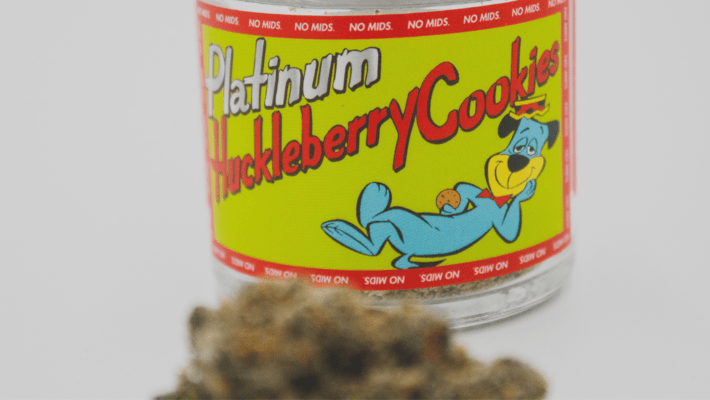
Strain Transparency & Naming Accuracy in Modern Cannabis
Published on 12/11/22
When it comes to strain names, some are relatively straightforward, using their parents' names to create their own (for example, Purple Punch x Kush Mints = Punch Mints). Others, though, are seemingly random - from pop culture fixtures like Bruce Banner to brand name favorites like Girl Scout Cookies. This guide will explore how strains are named, why some growers prefer their own terms, and how consumers can stay educated on what they're consuming.
What's in a Strain Name?
Origin
In the early days of human history, there was no distinction between the different types of cannabis flowers. Travelers went around the world collecting and trading goods with other nations, including our favorite good of all: marijuana. Bringing their plants back to breeding superhubs like Amsterdam and the American west coast, the growers soon began to name their offspring after their country of origin. Some of these remain relevant in the market today, like Afghan Kush, Hindu Kush, or Acapulco Gold. This is because cannabis dealers learned that they could sell their product faster and for more money if it had an exotic name and people assumed it was from a tropical locale.

Unique Traits
Some early strains were named based on their unique quality in smell, appearance, or effect. Skunk, for example, has a similar aroma to the animal; White Widow is named for its thick coating of white-colored trichomes, and Headband is named for the head-high feeling it creates in users. While these names are helpful in physical description and can describe their effects, it is difficult for consumers to determine exactly what they're smoking by these simplistic names alone.
Parent Cross-Breed
As hybrids have grown much more popular than pure indica or sativa strains, some growers name their bud quite straightforwardly: by crossing their two parents' strain names. This is how we've come to know strains like Blue Cheese (Blueberry x Cheese), Critical Lights (Northern Lights X Critical), and Hawaiian Snow (White Widow x Hawaiian Sativa). These names can be helpful for consumers who know exactly what they're looking for, though there may still be some inconsistencies even amongst the same strain, which we'll explore later.
Why are Some Names Unrelated to the Parents?
 Unsplash
UnsplashMarketing
Today, as legalization sweeps the nation and more cannabis companies than ever are clamoring to stand out from one another, strain names have become even more off-the-wall. Plus, sellers want their bud to remain bespoke, making it more difficult for competitors to rip them off. Many cannabis companies also wish to retain customer loyalty by creating a distinct vibe with their strain names and packaging.
Pop Culture References
Many strain names make cheeky references to stoner culture, like Pineapple Express (named after the popular weed-centric comedy starring Seth Rogen) or Puff Puff Pass Out (a play on the lingo "puff, puff, pass"). There are also strains named after celebrities, like Obama Kush or Berry White. This ties the consumer to both a name they can trust and a feeling of luxury. Perhaps the most common is naming strains after household brand names like Gorilla Glue or Girl Scout Cookies. This gives the bud legitimacy and subconsciously equates it to reliability to the consumer.
How Can You Tell Which Parents Make Up a Strain?
Accurate Labeling
There has been a massive push for cannabis companies to ensure more accurate packaging labels by genetically mapping their plants and seeds. This will allow both growers and the final consumer to compare the genetic makeup of their cannabis options to ensure the best and most reliable choice for them based on their scientific makeup, not their punchy name. Cannabis experts say that many strains that are labeled differently but are actually the same genetically have just been altered in name to increase their marketability. Some may even have a higher price tag and claim different effects despite being the same cannabis strain that has been grown for hundreds of years.
Inconsistencies in Strains
"One of the most common frustrations we hear from consumers is the lack of consistency in flower that shares the same name," Zoe Sigman, education co-director at the Farma dispensary, says about the value of the Phylos Certified program for patients and consumers. "Phylos' certification is the first step towards resolving that issue because the genetic test only needs to happen once if a grower is using clones, there shouldn't be any consumer cost increase."
However, it's also important to remember that growing conditions such as light, soil quality, nutrients, and harvest time can impact final the bud's qualities as much as its genetics - affecting everything from yield to potency and cannabinoid profile.
If you're in the market for a particular strain, your best bet is to find a trustworthy grower who offers accurate, descriptive packaging and properly genetically tests their plants. As strain names continue to grow wilder and wilder, it's important for the consumer to feel in control of the type and quality of cannabis they're consuming.
What's your favorite strain? Do you prefer strain names that include their parents' makeup? Let us know in the comments below!
